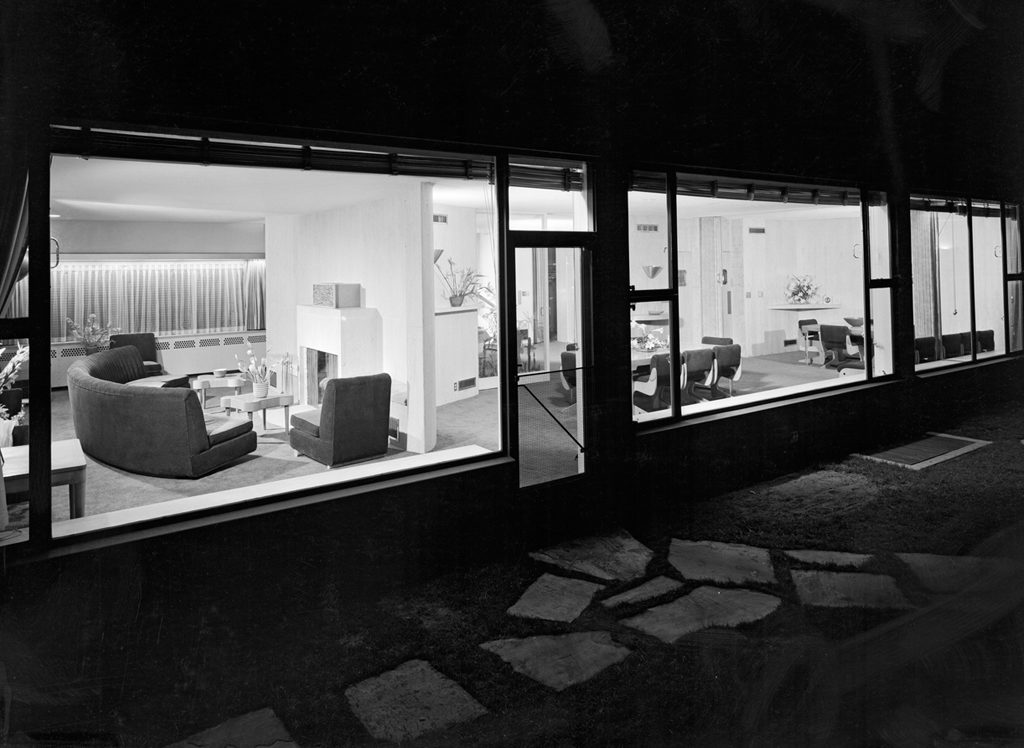How the House Came To Be
Robert Frank, Alan’s father and the third generation of Pittsburgh industrialists in his family, was an engineer devoted to inventing new products and building a new company, Copperweld Steel. His mind was open to innovative ideas, including modern architecture. As his family grew, he and his wife Cecelia started planning a new home.
“Mother and Dad considered Gropius the world’s leading architect,” Alan recalls. Gropius came to Pittsburgh to give a talk, and Robert attended. Inspired by what the new architecture could achieve and its potential to realize their ideals, Cecelia, Robert, and their young son Alan met with the architect at his office in Cambridge, Massachusetts, followed by a visit to Gropius‘ home in Lincoln. The Franks‘ interest grew. Long letters followed the meetings, and a collaboration was formed.
Gropius and Breuer came to Pittsburgh many times during the project, first to look at various parcels of land that were for sale, and then repeatedly throughout the design and construction. Cecelia and Robert contracted with a leading national construction company to do the building, and arranged for Pittsburgh architect Dahlen Ritchey, who had been a student of Gropius at Harvard, to supervise the construction.

A Productive Collaboration
Robert Frank, the engineer and inventor, contributed almost as much as the architects. His and Cecelia’s correspondence with the architects runs to hundreds of pages. During design and construction, suggestions, instructions and queries sometimes filled three single-spaced typewritten letters, each of seven to ten pages, a week.
The result of this collaboration became, as one scholar describes it, “a machine for living;” especially for healthy, comfortable living. It incorporated an integral system for cleaning air, an innovative internal phone and light signal system, built-in projection equipment to turn the recreation room into a movie theater, lightning rod systems made of Robert Frank’s Copperweld, and an energy conservation system using the water from the indoor swimming pool as part of the heating and cooling system of the house.
Growing Up in the Frank House
“Everything about this house was created to make it an extraordinarily livable home, and it was… a wonderful, exciting, happy place,” recalls Alan.
Celebrities dropped in on birthday parties. Family and neighborhood events took place around the pool. One day a week, at Cecelia’s suggestion, only French was spoken. And because of Cecelia’s commitment to the Pittsburgh community, guests of all ages, races and nationalities came to visit and stay. William S. McEllroy, Dean of the University of Pittsburgh School of Medicine, was a close family friend and frequent guest. During the era when much of the University of Pittsburgh Medical Center was being built, Bill McEllroy was recruiting outstanding scientists and physicians such as Jonas Salk. He brought many of them to the house, where he and Cele would convince them to move to Pittsburgh. Another of Cele’s good friends, Vira Heinz, was a regular visitor. The home was the setting for countless meetings where they worked together for the Pittsburgh Symphony, the Pittsburgh Youth Symphony, and the Civic Light Opera. And because of Cecelia’s close ties with the Pittsburgh arts community, the house was frequently the scene of opening night cast parties. One year, upon hearing that the cast of a Broadway musical performing in Pittsburgh had nowhere to go for Christmas, Cele said to the producer “Bring them over,” and so everyone, including the stagehands, celebrated Christmas with the family.

